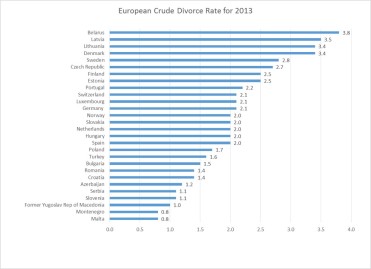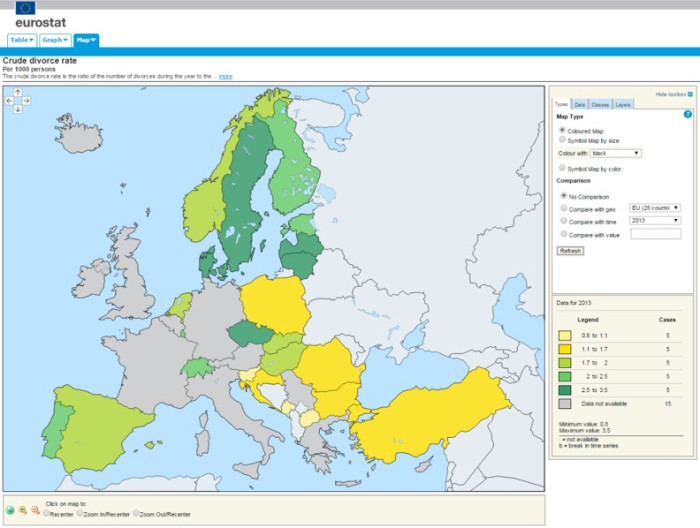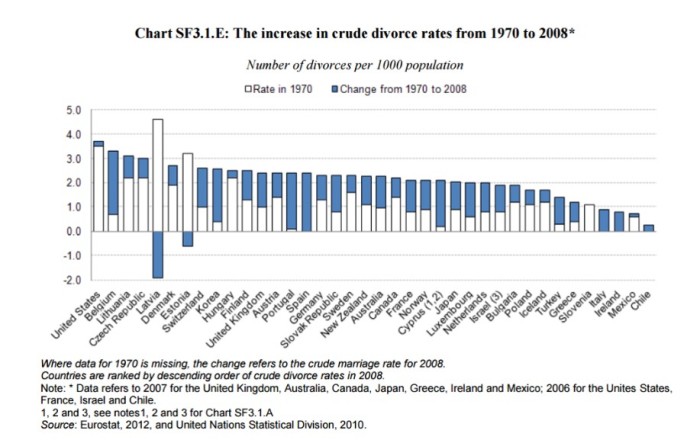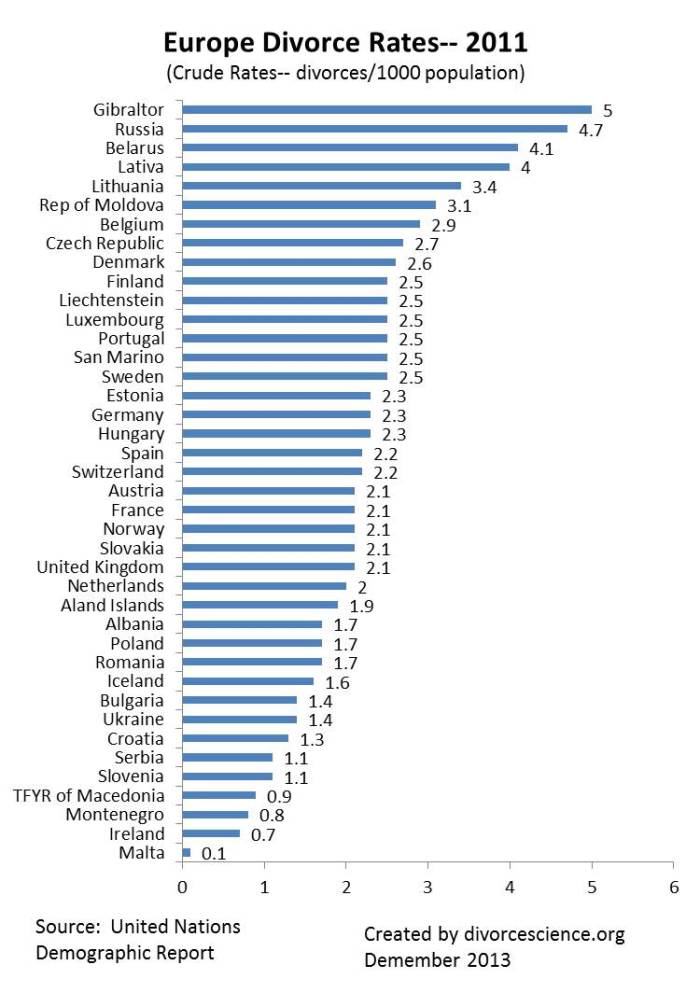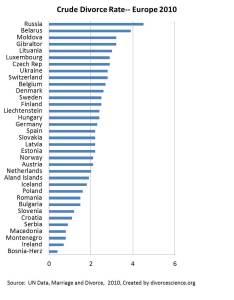A cross cultural look at the antecedents and consequences of divorce can provide further insights into our understanding of divorce.
Härkönen, Juho (forthcoming). Divorce. In Scott, Robert A. & Kosslyn, Stephen M. (Eds.), Emerging Trends in the Social and Behavioral Sciences. Chichester: John Wiley and Sons.
A nice summary of some theoretical and methodological issues to consider in studying divorce with some good references to this literature in Europe.
Terekhina S.A. Approaches to assessing the psychological well-being of minors when the parents divorce. Psikhologiia i pravo = Psychology and Law, 2015. no. 1, pp. 119–128. (In Russ., аbstr. in Engl.). Download PDF-fulltext (576 kb)
Only the abstract is in English, but this summary hints at some careful thinking about the conceptualization of “psychological well-being” in regards to children who have experienced the divorce of their parents.
Andersson, G., Obucina, O. & Scott, K. (2015). Marriage and Divorce of Immigrants and Descendants to Immigrants in Sweden, Stockholm Research Reports in Demography 2015: 14. (as noted on the paper this document has not received careful scientific review.)
A thoughtful examination of the marriage, divorce and remarriage patterns among immigrants to Sweden. The sample is large enough to examine variations among different immigrant groups (e.g., Eastern European and the Middle East/Africa). The authors explore the differential impact of “migration stress” on the marital patterns of immigrant children and adults.
